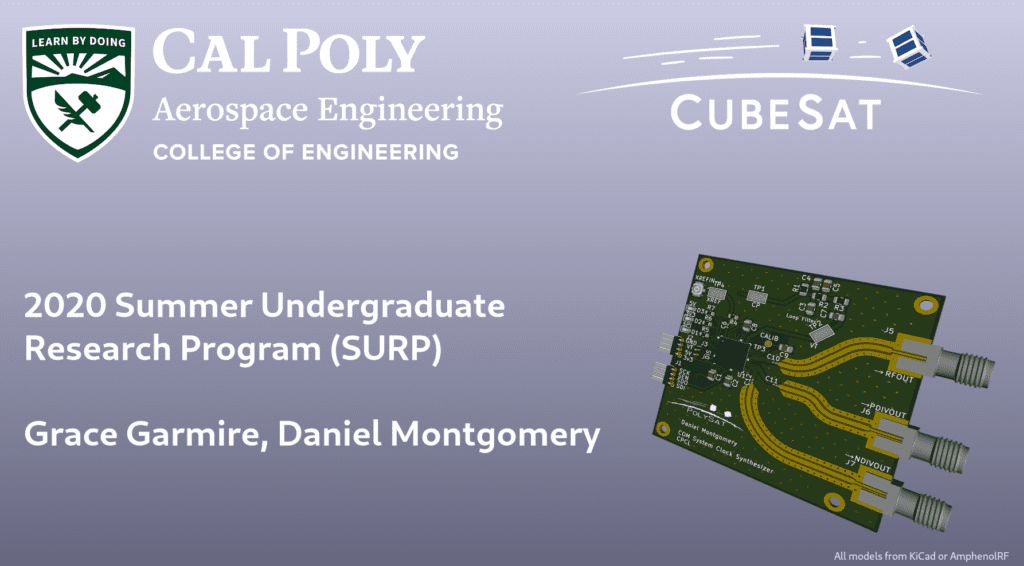About the team
The team consisted of two students who are members of the Cal Poly CubeSat Lab (polysat.org), an interdisciplinary lab where students collaborate to create CubeSats. Also, Andrew Yazhgur, an Aerospace Engineering graduate student, helped with various aspects of the project’s development. Our advisors were Dr. Pauline Faure and Ryan Nugent.

Grace Garmire
2ND YEAR AEROSPACE ENGINEERING
Grace is a second year aerospace engineering student, concentrating in astronautics. On the aerospace team at the Cal Poly CubeSat Lab, she specializes in systems engineering. She developed the systems engineering architecture during the SURP, and learned a lot about project management and mission requirements.
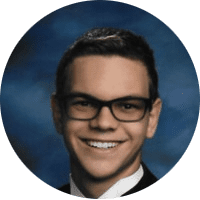
Daniel Montgomery
2ND YEAR Electrical Enginneering
Daniel is a second year Electrical Engineering student interested in astronautics, spaceflight, and spacecraft. He is a member of the software team at the Cal Poly CubeSat Lab. During this SURP, he was the principal Electrical Engineer developing the heterodyne transceiver.
Acknowledgements
We would like to thank Northrop Grumman corportation for sponsoring our project
Project Overview
This SURP required to develop a communication system designed for deep space missions. It was also required that the communication system was to be designed for use with CPCL’s X-band ground station. The overall project objectives are described below.
- Define mission and component level requirements
- Develop concept of operations, functional flow diagram, and interface specifications
- Select electrical components and a RF backend
- Create schematics and layout for a transceiver prototype
Systems Engineering
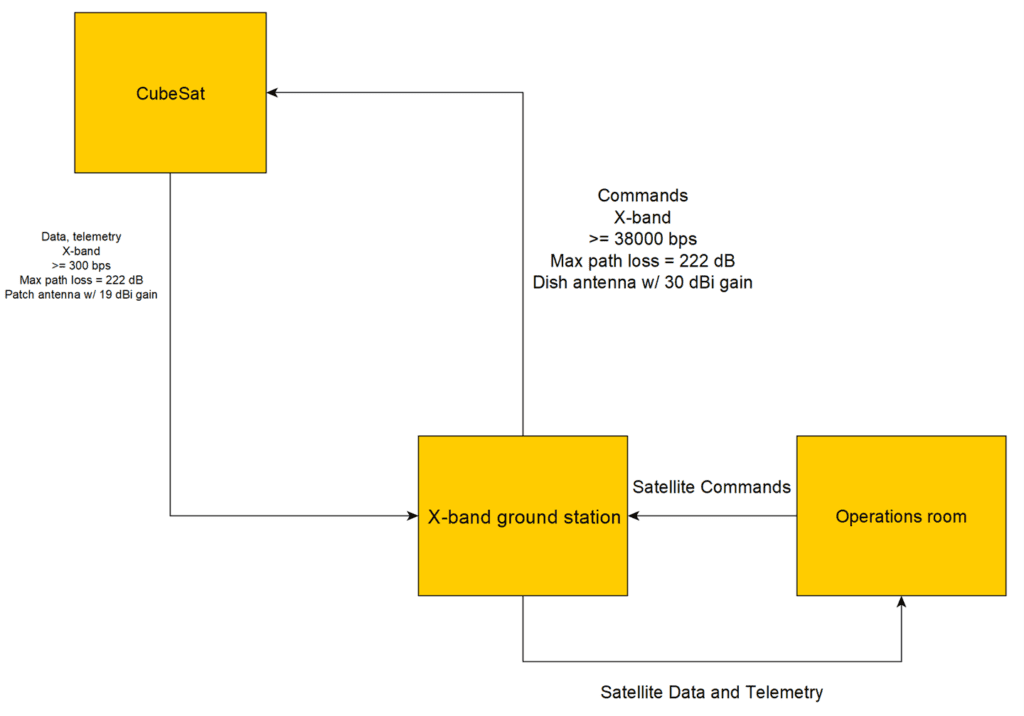
Before beginning the design of the communication system, the mission level requirements were defined to guide the project. These requirements were then decomposed to component level requirements. These component requirements guided the product breakdown structure.
- For each level of decomposition, the following tools were established.
- A concept of operations illustrating the operations of and interactions between components
- A functional flow block diagram outlining the functions of the communication system
- An N-Squared diagram to define interfaces within the communication system and with other subsystems of a satellite

Electrical Engineering
During SURP, the main tasks to be executed from an electrical engineering standpoint are presented below.
- Perform trade study on software defined radio (RF backend)
- Simulate RF parameters of bandpass filter using Keysight Genesys
- Determine transceiver architecture
- Some of the electrical challenges in designing this board included the following items.
- Board characteristics (substrate characteristics, controlled impedance)
Electrical Engineering Difficulties
There were serveral difficulties that arose during this project.
- Wideband filter S-parameters optimization
- Gain balancing
- Software defined radio difficulties
- Unknown minimum receiver power
Transeiver Architecture
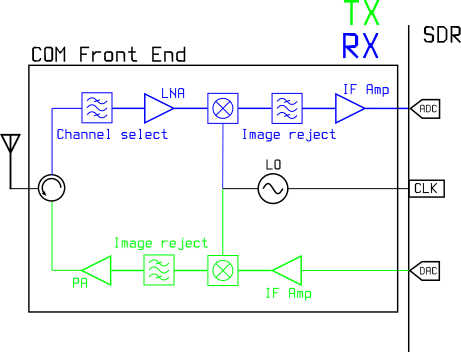
The proposed heterodyne transeiver archetecture
PCB Model
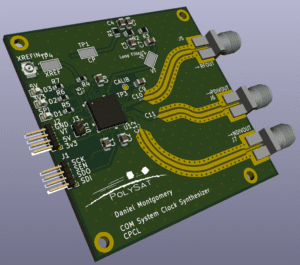
The clock synthesizer development board.
All models from KiCad or AmphenolRF.
Completed Work
The completed work during SURP is described below.
- Selected LimeSDR Mini as RF backend
- Schematic design and layout of transmitter and clock synthesizer
- Preliminary RF stripline filter analysis
- Link budget calculations
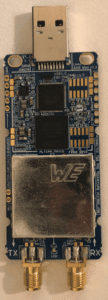
LimeSDR Mini
Future Steps
This communication system is being designed with the goal to eventually fly aboard deep space missions. As such, further development is required in the areas described below.
- Layout of prototype receiver board
- Testing of developed setup
- Continue research and development of microstrip filter
- Simulate system RF
- Develop flight prototype
Acknowledgements
We would like to thank Northrop Grumman Corportation for sponsoring our project. We would also like to give special thanks to:
- Andrew Yazhgur
- Prof. Steve Dunton
- Kendra Bubert
- Alicia Johnstone
- Dr. John Bellardo
This project is partially supported by the Aerospace Engineering Department.

